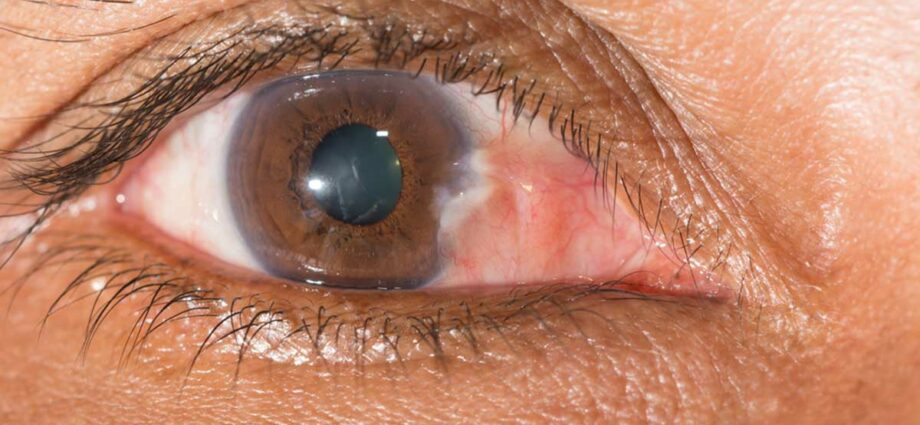Contents
Ptérygion
A pterygium is a mass of tissue growing at the level of the eye, most often in the inner corner. This is a lesion that is usually benign but can sometimes spread and affect visual acuity. Management depends on the severity of the lesion.
What is pterygium?
Definition of pterygium
A pterygium refers to a tissue growth at the level of the conjunctiva, that is to say a mass of tissue developing at the level of the transparent membrane covering the white of the eye.
In the majority of cases, pterygium develops in the inner corner of the eye and does not cause any symptoms. However, it sometimes spreads, reaches the cornea (a transparent structure located at the front of the eyeball) and disrupts vision.
Causes and risk factors
To date, the origin of the development of a pterygium is not clearly established. However, external factors have been identified that may favor its appearance. Among them, the main risk factor is excessive exposure to the sun. Exposure to wind, dust, sand, pollution, dirt, allergens and chemicals also appear to have an impact on the development of a pterygium.
Diagnosis of pterygium
The diagnosis of pterygium is based on a simple clinical examination. It can be confirmed by an ophthalmologist.
It is estimated that the development of a pterygium mainly concerns people who are regularly exposed to the sun. This tissue growth in the eye is more commonly seen in people who spend a lot of time outdoors and live in countries with hot, sunny climates.
Symptoms of pterygium
Tissue growth in the eye
The development of a pterygium is characterized by the appearance of a small mass of tissue in the white of the eye. This usually develops in the inner corner of the eye but can sometimes be seen in the outer corner.
In the majority of cases, the presence of a pterygium does not cause discomfort. The growth remains localized in the corner of the eye.
At the initial stage, the pterygium remains asymptomatic. It only causes the development of a small lump in the white of the eye which usually goes unnoticed and does not cause discomfort. This benign growth most often appears in the corner of the eye but can also develop in the outer corner of the eye.
Possible irritations
Sometimes the pterygium continues to expand. The pink and white mass of tissue then tends to cause an unpleasant sensation in the eye. It can be observed :
- tingling;
- a burning sensation;
- a sensation of the presence of foreign bodies.
These symptoms are accentuated during exposure to the sun. The pterygium turns red and tearing may occur.
Possible visual disturbances
In the most severe cases, the tissue mass will extend to the cornea and alter its structure. The deformation of the curvature of the cornea results in reduced vision.
Treatments for pterygium
Ophthalmologist follow-up
When the pterygium does not spread and does not cause any discomfort, no treatment is put in place. Only regular ophthalmologist monitoring is recommended to prevent any development of the pterygium.
Drug treatments
If the pterygium is spreading and causing discomfort, the symptoms can be treated with different treatments:
- artificial tears;
- anti-inflammatory eye drops;
- corticosteroid eye ointment.
Surgical treatment
Surgery is needed if the pterygium becomes too large and affects vision. The operation consists of performing a conjunctival autograft: the damaged part of the conjunctiva is removed and replaced by healthy tissue taken from the person concerned. This effective technique nevertheless presents a risk of recurrence. It is important to take preventive measures to prevent the pterygium from developing again.
Prevent pterygium
To prevent the development of pterygium, it is advisable to protect your eyes from various external aggressions (UV rays, wind, dust, pollution, dirt, allergens, chemicals, etc.). It is therefore recommended in particular to contact an optician to choose a pair of sunglasses with good protection against UV rays. It is also advisable to humidify the rooms of its place of life to avoid too dry atmospheres, and to fight as much as possible against dust deposits in its interior.










